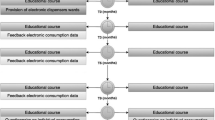Abstract
Objectives
Due to increased occupational dermatoses in certain professions such as health care workers (HCW), cleaning and kitchen employees (CKE), measures of prevention and skin protection are of high significance. Skin protection courses focus on educational aims (e.g. improving skin care habits, influencing the participants’ attitudes towards health) and medical aims (e.g. optimising diagnostic procedures, complementing individual therapy).
Methods
Participants are patients who have been suspected to suffer from an occupational skin disease and are insured with the German Accident Prevention & Insurance Association (BGW). Teaching units of the skin protection courses focus on basics of skin functioning and important aspects of occupational skin diseases. Practical parts include information and instructions about the correct implementation of skin protection, skin care and skin cleansing. Every participant is seen by a dermatologist obtaining a precise patient’s history and performing a skin examination. All this results in working out individually adapted and professional skin protection strategies.
Results
In total, 791 participants (93 men and 698 women) completed the skin protections courses. Six hundred and sixty-seven patients (mean age: 36.9 years, SD = 11.6) were HCW and 124 patients (mean age: 40.4 years, SD = 10.8) were CKE. In HCW 82.5% (n = 550) and in CKE 86.3% (n = 107) suffered from hand eczema of the atopic, irritant or allergic type. Irritant contact dermatitis as a single diagnosis was the most frequent one in both groups (HCW: 34.5.%, n = 230; CKE: 49.2% n = 61). According to regularly performed evaluations, the participants rated the course as good to excellent. Nearly 80% of the participants had skin lesions while attending the course, in 27% the dermatosis was severe.
Conclusions
There is a high need for health education, advisory services, diagnostics and additional therapy in occupational dermatology. Prevention of occupational skin diseases and maintenance of health through educational programmes are important complementary measures for dermatological care but still missing in endangered professions.



Similar content being viewed by others
References
Coenrads PJ, Bouma J, Diepgen TL (2004) Quality of life of patients with occupational hand eczema. Hautarzt 55:28–30
Dickel H, Bruckner T, Bernhard-Klimt C, Koch T, Scheidt R, Diepgen TL (2002a) Surveillance scheme for occupational skin disease in the Saarland, FRG. First report from BKH-S. Contact Dermatitis 46:197–206
Dickel H, Kuss O, John SM, Blome O, Hagemann KH, Schwanitz HJ (2004) Early secondary prevention of occupational skin disease in Germany: the dermatologist’s procedure in perspective. Int Arch Occup Environ Health 77:142–149
Dickel H, Kuss O, Schmidt A, Diepgen TL (2002b) Impact of preventive strategies on trend of occupational skin disease in hairdressers: population based register study. BMJ 324:1422–1423
Diepgen TL, Coenraads PJ (1999) The epidemiology of occupational contact dermatitis. Int Arch Occup Environ Health 72:496–506
Diepgen TL, Fartasch M, Hornstein OP (1989) Evaluation and relevance of atopic basic and minor features in patients with atopic dermatitis and in the general population. Acta Derm Venereol Suppl (Stockh) 144:50–54
Diepgen TL, Schmidt A (2002) Are incidence and prevalence of occupational skin diseases underestimated? Arbeitsmed Sozialmed Umweltmed 37:477–480
Diepgen TL, Schmidt A, Kresken J (2004) Prevention of occupational hand eczema by skin-care management—results of an interventional study. Arbeitsmed Sozialmed Umweltmed 39:307–314
Doutre MS (2005) Occupational contact urticaria and protein contact dermatitis. Eur J Dermatol 15:419–424
Freiman A, Bird G, Metelitsa AI, Barankin B, Lauzon GJ (2004) Cutaneous effects of smoking. J Cutan Med Surg 8:415–423
Frosch PJ, Peiler D, Grunert V, Grunenberg B (2003) Efficacy of barrier creams in comparison to skin care products in dental laboratory technicians—a controlled clinical trial. J Dtsch Dermatol Ges 1:547–557
Held E, Mygind K, Wolff C, Gyntelberg F, Agner T (2002) Prevention of work related skin problems: an intervention study in wet work employees. Occup Environ Med 59:556–561
Held E, Wolff C, Gyntelberg F, Agner T (2001) Prevention of work-related skin problems in students auxiliary nurses. an intervention study. Contact Dermatitis 44:297–303
Meding B, Wrangsjö K, Järvholm B (2005) Fifteen-year follow-up of hand eczema: predictive factors. J Invest Dermatol 124:893–897
Nettis E, Colonardi MC, Soccio AL, Ferrannini A, Tursi A (2002) Occupational irritant and allergic contact dermatitis among health care workers. Contact Dermatitis 46:101–107
Poot F, Janne P, Tordeurs D, Reynaert C, Salomon V (2000) Psychosomatics and dermatology: comparison between objective data and subjective impressions given by patients and dermatologists. Dermatol Psychosom 1:19–25
Schwanitz HJ, Riehl U, Schlesinger T, Bock M, Skudlik C, Wulfhorst B (2003) Skin care management: educational aspects. Int Arch Occup Environ Health 76:374–381
Skoet R, Zachariae R, Agner T (2003) Contact dermatitis and quality of life: a structured review of the literature. Br J Dermatol 149:452–456
Staab D, Diepgen TL, Fartasch M, Kupfer J, Lob-Corzilius T, Ring J, Scheewe S, Scheidt R, Schmid-Ott G, Schnopp C, Szczepanski R, Werfel T, Wittenmeier M, Wahn U, Gieler U (2006) Age-related, structured education programmes improve the management of atopic dermatitis in children and adolescents in a multicentre randomized controlled trial: Results of the German Atopic Dermatitis Intervention Study (GADIS). BMJ 332(7547):933–938
Strauss RM, Gawkrodger DJ (2001) Occupational contact dermatitis in nurses with hand eczema. Contact Dermatitis 44:293–296
Weisshaar E, Radulescu M, Bock M, Albrecht U, Diepgen TL (2006) Educational and dermatological aspects of secondary individual prevention in health care workers. Contact Dermatitis 54:254–260
Acknowledgments
We are thankful to Mrs Irmela Weyher for her continuous support of the practical part during the prevention courses in Heidelberg and to Mrs Elisabeth Zimmermann for documentation and supporting statistical evaluation.
Author information
Authors and Affiliations
Corresponding author
Rights and permissions
About this article
Cite this article
Weisshaar, E., Radulescu, M., Soder, S. et al. Secondary individual prevention of occupational skin diseases in health care workers, cleaners and kitchen employees: aims, experiences and descriptive results. Int Arch Occup Environ Health 80, 477–484 (2007). https://doi.org/10.1007/s00420-006-0154-z
Received:
Accepted:
Published:
Issue Date:
DOI: https://doi.org/10.1007/s00420-006-0154-z




